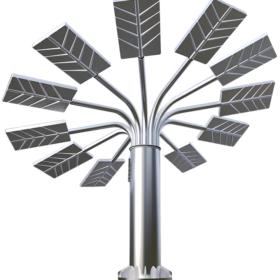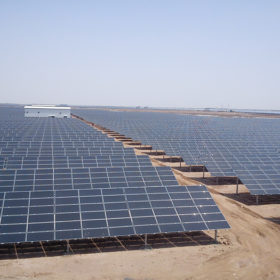India gifts solar rooftop to United Nations
The $1 million Gandhi Solar Park was an attempt to signal to the world India is committed to renewable energy. The 50 kW array features one panel for each UN member state.
Financing solar powered appliances for rural livelihoods
Rural micro enterprises in India suffer as financiers perceive lending for solar powered livelihood appliances as risky, owing to a lack of understanding of the technology and the viability of these enterprises—says a report by India’s Council on Energy, Environment and Water which also makes recommendations to improve the economic viability of financing for these products.
Haryana tenders ‘RESCO mode’ solar for government schools
The estimated project cost for 25 years is Rs 1500 crore. Bids can be submitted till October 21, along with Rs 50 lakh as bank guarantee.
IRENA and the UN ink agreement in New Delhi to combat desertification with renewables
A memorandum of understanding signed by the institutions was not solar specific but the use of PV modules for shading, especially in agriculture, can reduce water consumption and help halt the expansion of deserts.
Kerala tenders 200 MW grid-connected solar projects
October 16 is the bidding deadline for rooftop and ground-mounted solar plants that are to set up in various sizes—10 KWp or smaller, 11-100 KWp, above 100 kWp and combinations thereof—within consumer premises across the state.
Karnataka tops MNRE’s new rooftop PV index
Karnataka has snagged the top spot on the Ministry of New and Renewable Energy’s State Rooftop Solar Attractiveness Index.
CSIR-CMERI develops rotating solar power tree
The solar tree—costing around Rs 3 lakh for 3 kW capacity—auto tracks the sun to generate 10-15% extra power.
Gujarat’s solar capacity crosses 2.6 GW mark
Gujarat’s total installed solar capacity has crossed the 2.6 GW mark, according to the latest data released by the Gujarat Energy Development Agency (GEDA).
India’s renewable power generation cost the lowest in Asia Pacific
The cost of solar power generation in India has fallen to half the level seen in many other markets in the region due to extensive solar resource, market scale and competition.
Minister says India has surpassed 1.7 GW of non-commercial rooftop solar capacity
RK Singh told the upper house of the Indian parliament yesterday the nation had added 780 MW of new generation capacity in the last two years. The share of renewables in India’s power mix is rising too, but not fast enough to ensure electricity supply for all.















